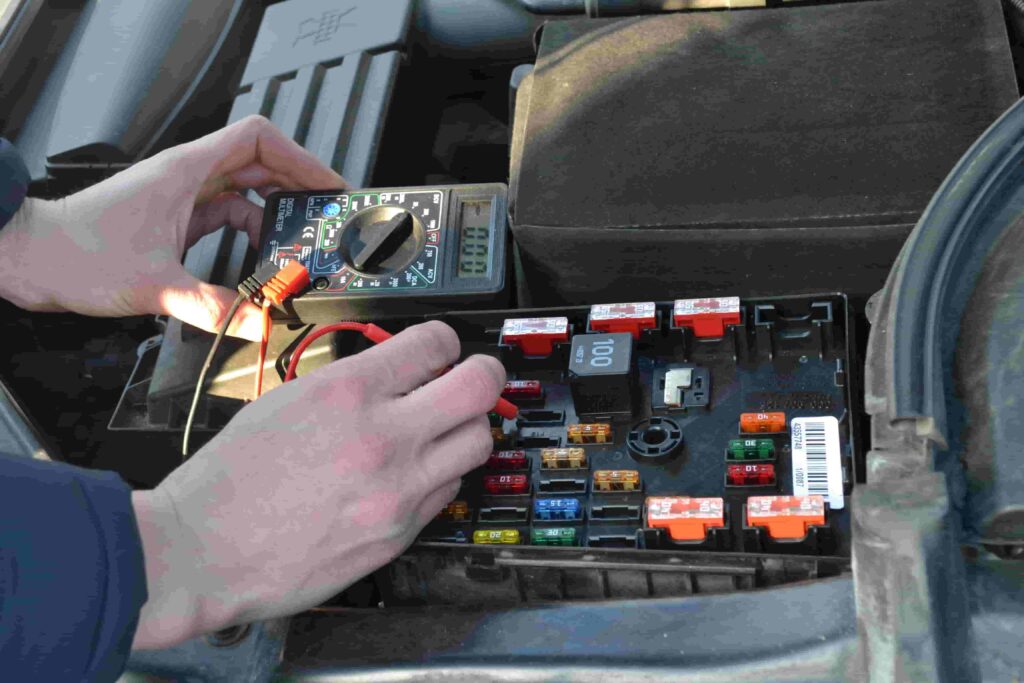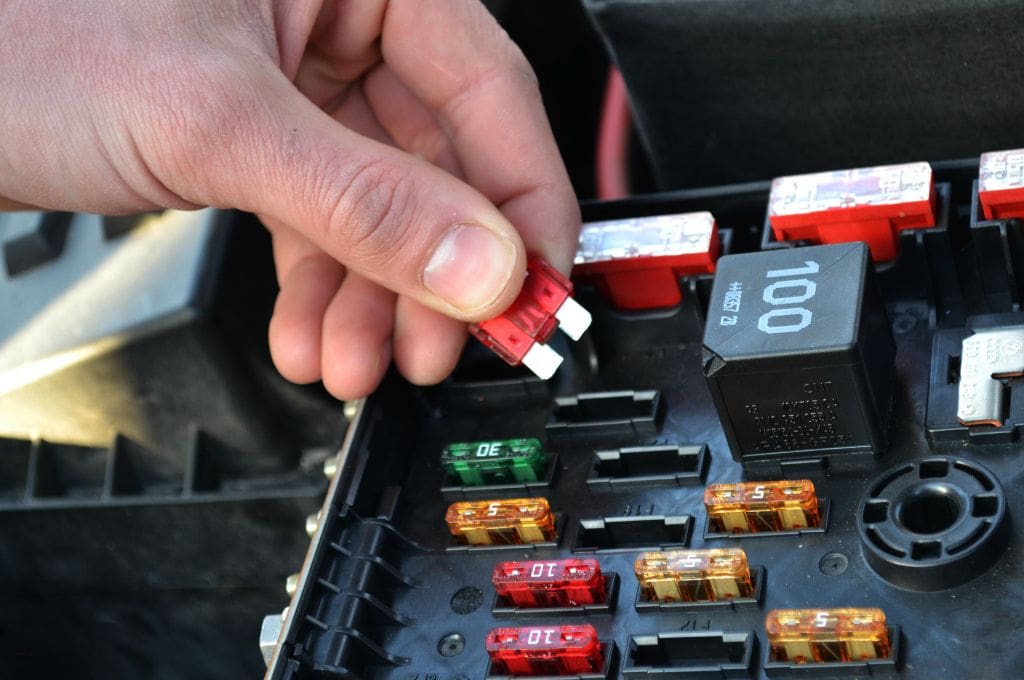Understanding the Importance of the Automotive Fuse Box
The automotive fuse box is an essential part of your vehicle’s electrical system. It protects the electrical circuits from potential damage due to overcurrent situations, electrical surges, and short circuits. Without the fuse box, electrical components in your car, such as the lights, radio, and engine control unit (ECU), would be susceptible to malfunction or permanent damage. The fuse box is the core of your vehicle’s electrical protection, ensuring the safe and uninterrupted function of all electrical circuits.
What This Guide Covers
In this comprehensive guide, we will cover everything there is to know about automotive fuse boxes, including their function, types of fuses, how to maintain and troubleshoot them, fuse box locations, and much more. This guide will also provide you with a step-by-step breakdown on how to inspect and repair the fuse box in your vehicle.
What is an Automotive Fuse Box?
An automotive fuse box is a compartment that houses the fuses and relays and protects the electrical circuits within your vehicle. The fuse box works as a failsafe system by disconnecting a circuit when the current flowing through it exceeds a certain level. This is usually caused by an electrical overload, which can occur when a short circuit or a component draws more current than the fuse can handle. Fuses act as safety devices that protect the car’s electrical components from severe damage.
Fuses are designed to “blow” when the circuit they protect overloads, interrupting the electrical flow. This allows you to prevent further damage or fire hazards caused by overheating or electrical malfunctions. The fuse box has several slots to hold the fuses and relays, and each fuse is assigned to a particular vehicle system.
The Importance of the Fuse Box
The automotive fuse box serves several essential functions in maintaining the functionality and safety of your vehicle’s electrical systems. Here’s a closer look at the critical roles that the fuse box plays:
1. Circuit Protection
The fuse box safeguards your vehicle’s electrical circuits from damage caused by excessive electrical current. When a circuit experiences an overload, the fuse blows, protecting the circuit from permanent damage. Without a properly functioning fuse box, your vehicle’s electrical components would be vulnerable to failure, which could lead to expensive repairs or replacements.
2. Component Safety
The automotive fuse box ensures the safety of individual components within your vehicle, such as the engine control unit (ECU), airbags, lighting system, air conditioning, and more. These electrical components rely on the fuse box to maintain a stable current, and in the event of an overload, the fuse box disconnects the faulty circuit to prevent damage.
3. Troubleshooting Made Easy
When there’s an issue with an electrical component in your vehicle, a blown fuse is often the first place to check. automotive fuse box typically have diagrams printed on the cover that show each fuse’s location and function. This makes it simple to find and replace a blown fuse. Proper labelling in the fuse box helps identify each fuse’s exact location and relay, simplifying troubleshooting.
4. System Diagnosis
If a vehicle component is not working correctly, the fuse box is often the first place to check. A blown fuse typically indicates that there is a problem. The fuse box provides a centralised location to assess and replace fuses, allowing for faster diagnosis and resolution of electrical problems.
Components of the Automotive Fuse Box
The automotive fuse box contains several components that safeguard the vehicle’s electrical system. Understanding these components can help you better maintain and troubleshoot the fuse box.
1. Fuses
Fuses are the primary safety components in a fuse box. They are usually made of metal wire or filament enclosed in a plastic or glass body. When a circuit overload occurs, the fuse blows, breaking the connection and stopping the flow of electricity. Fuses are typically colour-coded to indicate their amperage rating, determining how much electrical current the fuse can handle before blowing.
2. Relays
automotive fuse box Relays are electrical components that act as switches for high-current devices. They control devices such as the fuel pump, starter motor, and air conditioning system, allowing them to operate without putting undue stress on the electrical circuits. Relays are often located next to the fuses in the fuse box.
3. Fuse Box Cover
The automotive fuse box cover shields the fuses and relays from dirt, dust, moisture, and other environmental elements. In addition to protection, the cover often contains a diagram or label that identifies each fuse’s function, which is helpful when troubleshooting or replacing fuses.
4. Fuse Box Labelling
Most modern fuse boxes are labelled to show which fuse corresponds to which electrical system in the vehicle. These labels are typically located on the cover or the fuse box itself. Each fuse will be identified by a number or symbol, allowing you to quickly find and replace a blown fuse.
Types of Automotive Fuses
automotive fuse box come in various sizes and types, depending on the circuit they are designed to protect. Understanding the different types of fuses used in automotive applications is crucial for proper maintenance and replacement.
1. Blade Fuses
Blade fuses are the most widely used type of automotive fuse. They are plastic and have two metal prongs that fit into the fuse box slots. Blade fuses come in various colours, each corresponding to a specific amperage rating. These fuses are widely used for protecting circuits such as lighting, air conditioning, and power windows.
2. Glass Tube Fuses
automotive fuse box Glass tube fuses are older and less common than blade fuses, but are still used in some vehicles. These fuses are cylindrical, with a glass body that contains a metal wire or filament. When the current exceeds the fuse’s rating, the filament inside the glass tube melts, interrupting the circuit.
3. Cartridge Fuses
Cartridge fuses are larger than blade or glass tube fuses. They are used in high-current circuits requiring extra protection, such as alternators or electric motors. Depending on the vehicle’s specifications, cartridge fuses are available in low- and high-voltage types.
4. Circuit Breakers
Circuit breakers are resettable fuses that can be used instead of regular fuses. Unlike traditional fuses that need to be replaced after blowing, circuit breakers can be reset once they trip. This makes them ideal for high-current devices that may need reset after a fault occurs. Circuit breakers are commonly used in systems like the vehicle’s air conditioning and heating.
Fuse Box Locations in Vehicles
The automotive fuse box in a vehicle can be found in one or more locations, depending on the make and model of the car. The two most common locations are:
1. Main Fuse Box (Under the Hood)
The main fuse box is usually found in the engine bay, close to the battery or engine components. It houses fuses that control essential vehicle systems such as the engine, alternator, lighting, and cooling fans. The under-hood fuse box is exposed to environmental factors, so it is protected by a cover to prevent moisture, dirt, and debris from entering.
2. Interior Fuse Box
The interior fuse box is inside the vehicle, usually beneath the dashboard or near the driver’s seat. It manages the car’s electrical systems, including the radio, windows, power locks, and interior lighting. Some vehicles also have additional fuse boxes in the glove box, the centre console, or the trunk.
How to Read a Fuse Box Diagram
Aautomotive fuse box diagram is essential for understanding the layout of the fuses in your vehicle and identifying the fuse responsible for a specific system. Fuse box diagrams are typically inside the cover, but they can also be found in the vehicle’s owner’s manual.
To read a fuse box diagram:
- Identify Fuse Numbers: Each fuse is assigned a unique number, which is also referenced in the diagram.
- Check Component Labels: The diagram will list the systems that each fuse protects, such as “headlights,” “air conditioning,” or “radio.”
- Inspect Amperage Ratings: The diagram will note each fuse’s amperage rating, which tells you the maximum current the fuse can handle.
How to Replace a Blown Fuse
Replacing a blown fuse is an easy task that requires only a few basic tools. Here’s a step-by-step guide:
- Identify the Faulty Fuse: Use the fuse box diagram to locate the fuse that controls the system that isn’t working.
- Remove the Fuse: Carefully remove the blown fuse using a fuse puller or a pair of needle-nose pliers.
- Inspect the Fuse: Look at the metal wire inside the fuse. If the wire is broken or discolored, the fuse is blown and should be replaced.
- Install a New Fuse: Replace the blown fuse with a new one that has the same amperage rating. Make sure the new fuse is seated correctly in the slot.
- Test the System: After replacing the fuse, test the electrical system to ensure it’s working correctly.
Common Problems with Automotive Fuse Boxes
While automotive fuse box are generally reliable, several issues can arise over time that require attention. The most common problems include:
1. Blown Fuses
A blown fuse is the most common issue car owners face. Overload or short circuits can cause a fuse to blow, disconnecting the circuit and stopping the electrical system from functioning. A blown fuse typically indicates a problem that needs to be addressed, such as a faulty electrical component or a short circuit.
2. Corrosion
Corrosion is a common problem, especially in vehicles exposed to moisture, salt, or dirt. Over time, corrosion can build up on the fuse box terminals, preventing proper contact between the automotive fuse box and the terminal. This can lead to poor electrical connections or failure of the fuse to protect the circuit.
3. Loose or Faulty Connections
Loose connections or damaged terminals can cause electrical issues, including intermittent power loss or system malfunctions. Vibration from driving, as well as wear and tear, can cause terminals to loosen or break.
4. Damaged Fuse Box
Impacts, heat, or old age can cause physical damage to the fuse box. This can cause electrical problems and make it difficult to replace fuses.
Maintaining Your Automotive Fuse Box
Regular maintenance is essential to keep your fuse box and electrical system functioning correctly. Here are some tips for maintaining your fuse box:
1. Inspect Fuses Regularly
Regularly inspect the fuses for any signs of wear or damage. Dically ch If a fuse is blown, replace it as soon as possible. If a fuse blows repeatedly, it may indicate a more serious electrical issue that needs to be addressed.
2. Keep the Fuse Box Clean
Dirt, dust, and moisture can cause corrosion and short circuits. To keep the automotive fuse box clean, wipe down the terminals and contacts with a dry cloth. If necessary, blow out any dirt or debris with compressed air.
3. Replace Blown Fuses Promptly
Replace blown fuses as soon as possible to prevent further damage to the vehicle’s electrical system. Always replace a blown fuse with one of the correct amperage ratings.
4. Use the Correct Fuses
When replacing a blown fuse, use the correct type and amperage rating. Using the incorrect fuse can damage the circuit and cause further electrical problems.
Troubleshooting Electrical Problems in Your Vehicle
If you’re facing electrical problems in your vehicle, the fuse box is typically the first place to inspect. Here’s how to troubleshoot common electrical problems:
1. Identify the Problem
Determine which system or component is malfunctioning. Check the relevant fuse if it’s a light, radio, or window.
2. Check the Fuse Box Diagram
Use the diagram to locate the fuse corresponding to the faulty component.
3. Inspect the Fuse
Check for any blown fuses and replace them if needed.
4. Test the System
After replacing the fuse, test the system to ensure it works properly.
Conclusion
The automotive fuse box is a critical component of your vehicle’s electrical system, protecting electrical circuits from damage caused by overcurrent and short circuits. By understanding how the fuse box works, regularly inspecting and replacing fuses, and troubleshooting electrical issues, you can help ensure the safety and reliability of your vehicle’s electrical system.
Proper maintenance and timely repairs can save you from expensive repairs, keep your car running smoothly, and help you avoid unexpected electrical failures.With the knowledge shared in this guide, you should be well-equipped to handle issues related to the automotive fuse box, maintain your vehicle’s electrical system, and keep everything in good working order for years.






Leave a Reply